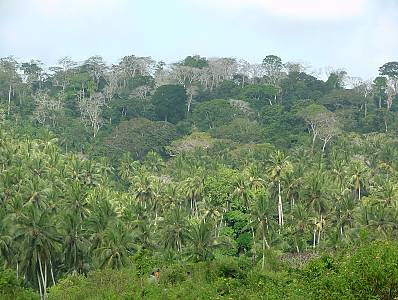- Kenya


Traditions and practices of the Kayas in the Sacred Forests of the Mijikenda in Kenya

© 2007 by National Museums of Kenya
1. ICH domains
Oral traditions and expressions, social practices, rituals, knowledge and practices concerning nature and the universe
2. Short description
The Mijikenda peoples consist of nine ethnic groups in the Kaya forests of coastal Kenya. The identity of the Mijikenda peoples is expressed through oral traditions and performing arts related to the sacred sites located in forests, taking place around the remains of fortified villages or ‘Kayas’. These traditions and practices constitute their codes of ethics and governance systems, and include prayers, oath-taking, burial rites and charms, naming of new-borns, initiations, reconciliations, marriages and coronations. The values attached to them and the use of natural resources within the Kayas and its corresponding access are regulated by traditional knowledge and management practices that have helped in the protection of the Kaya forests and the biodiversity to the present day.
The Kayas were created in the 16th century but were abandoned by the 1940s. Since then, the forests around the Kayas have been nurtured by the Mijikenda and are now almost the only remains of Kenya’s once extensive coastal lowland forest. Kayas are cultural spaces, but due to pressure on land resources and urbanisation, the traditions and practices associated with the Kaya settlements are now endangered. Eleven of the approximately 30 Kayas were inscribed in 2008 as a UNESCO World Heritage Site. In addition, the traditions and practices associated with the Kayas were inscribed in 2009 on UNESCO’s List of Intangible Cultural Heritage in Need of Urgent Safeguarding.
Further information:
The following link provides a 9-minute film clip on ‘The Living Heritage of the Mijikenda Kaya Forests’:
http://www.youtube.com/watch?v=vwM1RV_j2Q4
For more information, see:
http://ich.unesco.org/en/USL/traditions-and-practices-associated-with-the-Kayas-in-the-sacred-forests-of-the-mijikenda-00313#identification
http://sacredland.org/wp-content/uploads/2017/07/Mijikenda_Kaya.pdf
3. Link with sustainable development
Since their abandonment as places of settlement, the Mijikenda have considered the Kayas as situated in their spiritual sphere. As part of this process, the Council of Elders imposed protections in terms of access and the utilization of natural forest resources, including on the use of medicinal plants. The biodiversity of the Kayas and forests surrounding them has consequently been protected, guaranteeing harmonious co-existence with the natural environment in more than 50 Kayas/villages. At the request of the local communities, the government also gazetted Kayas as national monuments and forest reserves. Groups have also adopted alternative livelihood activities compatible with safeguarding efforts. Such environmental conservation is widely recognised as a key to sustainable development. SDG 12 specifically aims ‘to achieve the sustainable management and efficient use of natural resources’. The conservation of the sacred Kaya forests provides an example of an ICH element contributing to the realisation of this target. Moreover, protecting the biodiversity of the Kayas and the surrounding forests contributes to SDG 15.
4. Questions for reflection
What do you think are some of the threats to the Kaya way of life? What policies and initiatives could be taken to support communities in transmitting the traditional knowledge related to the kayas?
While tourism is promoted in the Kayas and has brought economic benefits, sight-seeing along the Kenyan coast has also come at great cost to the environment and Kenyan culture. An acute need for productive farmland in a country that has one of the world's highest population growth rates is exacerbated by the demand for prime sites for tourist development. For more on this, see the following article, ‘Sacred Groves Threatened by Development: The Kaya Forests of Kenya’:
https://www.culturalsurvival.org/publications/cultural-survival-quarterly/sacred-groves-threatened-development-Kaya-forests-kenya
What are the positive and negative forces that tourism brings to the safeguarding elements of the traditional knowledge related to the Kayas? Do you know of similar examples in your country context?
A lack of interest among younger generations has been cited as a concern to ensuring these practices are continued. The practices have also been largely perceived as a space for elderly men who are the Elders, and that there is no place for women and youth. What are some steps the community can take to address these?